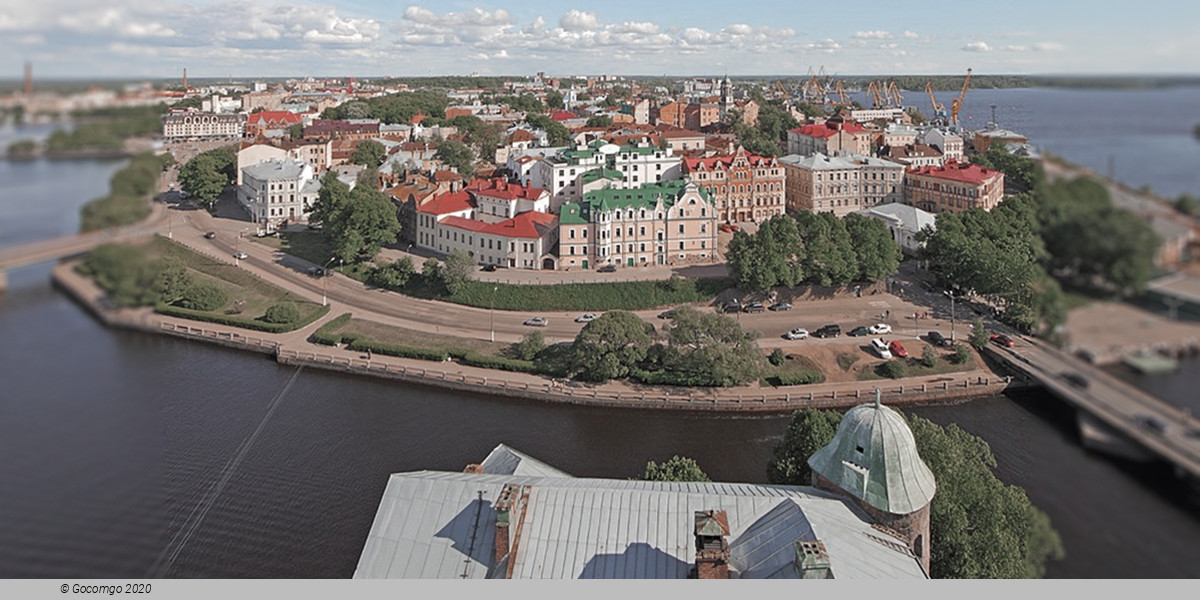Vyborg

Vyborg is a town in, and the administrative center of, Vyborgsky District in Leningrad Oblast, Russia. It lies on the Karelian Isthmus near the head of the Vyborg Bay, 130 km (81 miles) to the northwest of St. Petersburg and 38 km (24 miles) south of Russia's border with Finland, where the Saimaa Canal enters the Gulf of Finland. The population of Vyborg is as follows: 79,962 (2010 Census); 79,224 (2002 Census); 80,924 (1989 Census).
Located in the boundary zone between the East Slavic/Russian and Finnish worlds, formerly well known as one of the few medieval towns in Finland, Vyborg has changed hands several times in history, most recently in 1944 when the Soviet Union captured it from Finland during World War II. Finland evacuated the whole population of the city and resettled them within the rest of Finland.
The city hosts the Russian end of the 1,222 km (759 mi) Nord Stream gas pipeline, laid in 2011 and operated by a consortium led by Russia's Gazprom state hydrocarbons enterprise to pump 55 billion cubic meters (1.9 trillion cubic feet) of natural gas a year under the Baltic to Greifswald, Germany.
Vyborg's most prominent landmark is its Swedish-built castle, which started in the 13th century and extensively reconstructed in 1891–1894. The Round Tower and the Rathaus Tower date from the mid-16th century and are parts of the Medieval Vyborg town wall. Many of the buildings in the historic old town of Vyborg are still in poor condition today.
The Viipuri Library by Finnish architect Alvar Aalto and the Hermitage-Vyborg Center are a reference point in the history of modern architecture. There are also Russian fortifications of Annenkrone, completed by 1740, as well as the monuments to Peter the Great (1910) and Torkel Knutsson. Tourists can also visit the house where the founder of the Soviet state Vladimir Lenin prepared the Bolshevik revolution during his stay in Viipuri from September 24 to October 7, 1917.
Sprawling along the heights adjacent to the Gulf of Finland is Monrepos Park, one of the most spacious English landscape gardens in Eastern Europe. The garden was laid out at the behest of its owner, Baron Ludwig Heinrich von Nicolay, at the turn of the 19th century. Most of its structures were designed by the architect Giuseppe Antonio Martinelli. Previously, the estate belonged to the future king Frederick I (Maria Fyodorovna's brother), who called it Charlottendahl in honor of his second wife.

